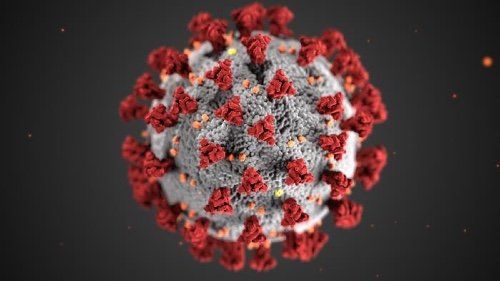Prepare for the Post-COVID Surge: RSNA Issues Guidance
Expect school closures to affect radiologist availability, and create a plan that protects patients and providers.

If it has not already started happening, the post-COVID-19 imaging surge will likely hit your facility soon. And, to help you manage this considerable imaging volume effectively, the Radiological Society of North America (RSNA) released preparedness guidance Monday.
With healthcare resources already stretched to the maximum, you will need to plan carefully in order to accommodate the sudden influx of scans. In its three-page guidance document, the RSNA COVID-19 Task Force outlined the steps your hospital can take to set itself up for success.
“After overcoming the peak of health care resource needs in the region, hospitals, and their radiology departments must turn more of their focus to patients whose elective, screening, and other time-sensitive imaging examinations have been postponed,” wrote a team led by Task Force Chair Mahmud Mossa-Basha, M.D., from the University of Washington Medical Center.
To help you effectively prepare, Mossa-Basha and his colleagues detailed recommendations on re-opening for elective imaging, approaches for limiting patient exposure, protecting healthcare workers, and educating residents and fellows.
When putting any plans into place, he said, you should remember the personal restrictions some of your providers might still have as the outbreak continues to linger.
“It is important to consider that continued school and day care closures may have a substantial impact on the availability of sufficient radiology staff,” he advised. “Mitigating factors may include staggering work shifts, home workstations for radiologists and capacity for flexing or re-deploying staff as needed.”
Elective Imaging
When you open will depend on your institutional, state, and city policies, but consider these factors when you do start conducting elective studies again:
- Ramp up slowly to prevent increased staff and patient exposures
- Schedule appointments, extending hours if you need to, to maximize social distancing and cleaning time
- Institute remote pre-registration, and prohibit visitors except in cases where patients need ambultaroy assistance
- Streamline outpatient imaging protocols
- Move all outpatient exams to an ambulatory setting, designating machines for COVID-19-positive patients
Limiting Patient Exposure
The Task Force emphasized being sure to take the necessary precautions to keep your patients safe:
- Screen patients for fever and symptoms at check-in
- Consider masking all patients and asking employees who have cloth masks to use them to conserve personal protective equipment
- Place waiting room chairs 6 feet apart
- Establish one-way traffic and put up proper signage to help with directions
- Extend facility hours, and have patients wait in their cars
Protect Staff
Implementing these strategies can also help safeguard your colleagues and staff:
- Continue social distancing in your reading rooms, scanner console areas, and break rooms
- Limit on-site reading room coverage
- Maintain at-home or remote coverage as possible
- Stagger radiologist and technologist coverage for extended hours and better social distancing
Educate Residents
If you are an academic facility, it is also important to remember the safety of your trainees:
- Continue virtual case review with trainees
- Continue virtual conferences, meetings, and educational conferences
Overall, Mossa-Basha said, this guidance is designed to help you manage the COVID-19 outbreak as best as possible.
“These resources include guidance on departmental policies, surge, and post-COVID preparedness insights, educational resources, and radiology reporting tools,” he said.
The Reading Room Podcast: Emerging Trends in the Radiology Workforce
February 11th 2022Richard Duszak, MD, and Mina Makary, MD, discuss a number of issues, ranging from demographic trends and NPRPs to physician burnout and medical student recruitment, that figure to impact the radiology workforce now and in the near future.
Strategies to Reduce Disparities in Interventional Radiology Care
March 19th 2025In order to help address the geographic, racial, and socioeconomic barriers that limit patient access to interventional radiology (IR) care, these authors recommend a variety of measures ranging from increased patient and physician awareness of IR to mobile IR clinics and improved understanding of social determinants of health.
Study Explores Impact of Insurance on Treatment and Referrals for Patients with Uterine Fibroids
February 19th 2025Women with uterine fibroids and Medicaid coverage are significantly more likely to be treated with uterine artery embolization than those with commercial insurance, according to newly published research.